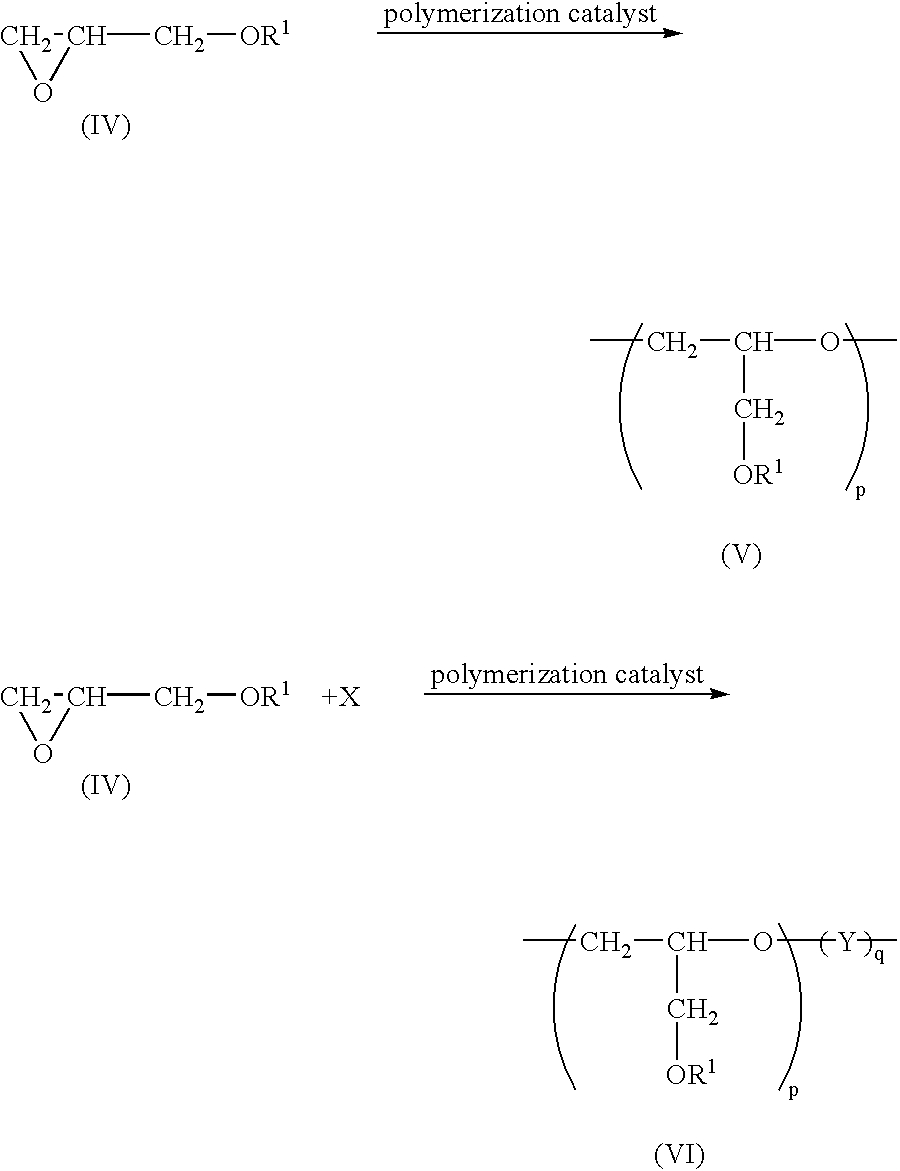Rubber composition for tire tread and pneumatic tire using the same
a technology of rubber composition and tire tread, which is applied in the direction of rolling resistance optimization, inorganic insulators, transportation and packaging, etc., can solve the problems of poor processability such as extrusion, affecting the performance of rubber composition, and reducing grip performance, so as to improve the dispersibility of inorganic fillers and maintain abrasion resistance. , the effect of excellent wet grip performan
- Summary
- Abstract
- Description
- Claims
- Application Information
AI Technical Summary
Benefits of technology
Problems solved by technology
Method used
Image
Examples
embodiment 1
EXAMPLES 1 TO 5 AND COMPARATIVE EXAMPLES 1 TO 2
[0086]Sample rubber compositions were obtained by kneading and compounding based on the compounding recipe described in Table 1. The compounds were press-vulcanized at 170° C. for 20 minutes to obtain vulcanized materials. Each of the obtained materials was subjected to the following property tests.
(Abrasion Test)
[0087]Using a Lambourne abrasion tester, the Lambourne abrasion amount was measured under the condition of 20° C., a slip ratio of 20% and testing time of 5 minutes. The volume loss of each compound was calculated and indexed to the loss of Comparative Example 1 as 100 according to the following equation (abrasion index). The larger the index is, the more excellent the abrasion resistance is.
(abrasion index)=(loss of Comparative Example 1)÷(loss of each compound)×100
(Rolling Resistance Index)
[0088]The loss tangent (tan δ) of each compound was measured by using a viscoelasticity spectrometer VES (made by Iwamoto Corporation) und...
embodiment 2
EXAMPLES 6 TO 10 and COMPARATIVE EXAMPLES 3 TO 4
[0097]Initially, chemicals except for sulfur and the vulcanization accelerator was kneaded and compounded at 150° C. for 4 minutes based on the compounding recipe described in Table 2. Then, sulfur and the vulcanization accelerator were added thereto and the kneading and compounding were continued to obtain sample rubber compounds.
[0098]The compounds were press-vulcanized at 170° C. for 20 minutes to obtain vulcanized materials. Each of the obtained materials was subjected to the following property tests.
[0099]Evaluation was made in the same manner as in Embodiment 1 except that the Mooney viscosity of Comparative Example 3 (ML1+4) was assumed to be 100.
(Abrasion Test)
[0100]Evaluation was made in the same manner as in Embodiment 1 except that the loss of Comparative Example 3 was assumed to be 100.
(Rolling Resistance Index)
[0101]Evaluation was made in the same manner as in Embodiment 1 except that the tan δ of Compara...
embodiment 3
[0104]Polyether compounds were synthesized according to the following Preparation Examples. The molecular weight of the synthesized polyether compounds was measured according to GPC using a measuring machine type 150C made by Waters Inc. and two columns Shodex HT-806 and Shodex HT-803 available from Showa Denko K. K. (column temperature: 130° C., moving phase: o-dichlorobenzene). The molecular weight of the synthesized polyether compound was determined as the number average molecular weight (hereinafter referred to as Mn) converted to a polystyrene basis.
PUM
| Property | Measurement | Unit |
|---|---|---|
| nitrogen adsorption specific surface area | aaaaa | aaaaa |
| nitrogen adsorption specific surface area | aaaaa | aaaaa |
| temperature | aaaaa | aaaaa |
Abstract
Description
Claims
Application Information
 Login to View More
Login to View More - R&D
- Intellectual Property
- Life Sciences
- Materials
- Tech Scout
- Unparalleled Data Quality
- Higher Quality Content
- 60% Fewer Hallucinations
Browse by: Latest US Patents, China's latest patents, Technical Efficacy Thesaurus, Application Domain, Technology Topic, Popular Technical Reports.
© 2025 PatSnap. All rights reserved.Legal|Privacy policy|Modern Slavery Act Transparency Statement|Sitemap|About US| Contact US: help@patsnap.com



